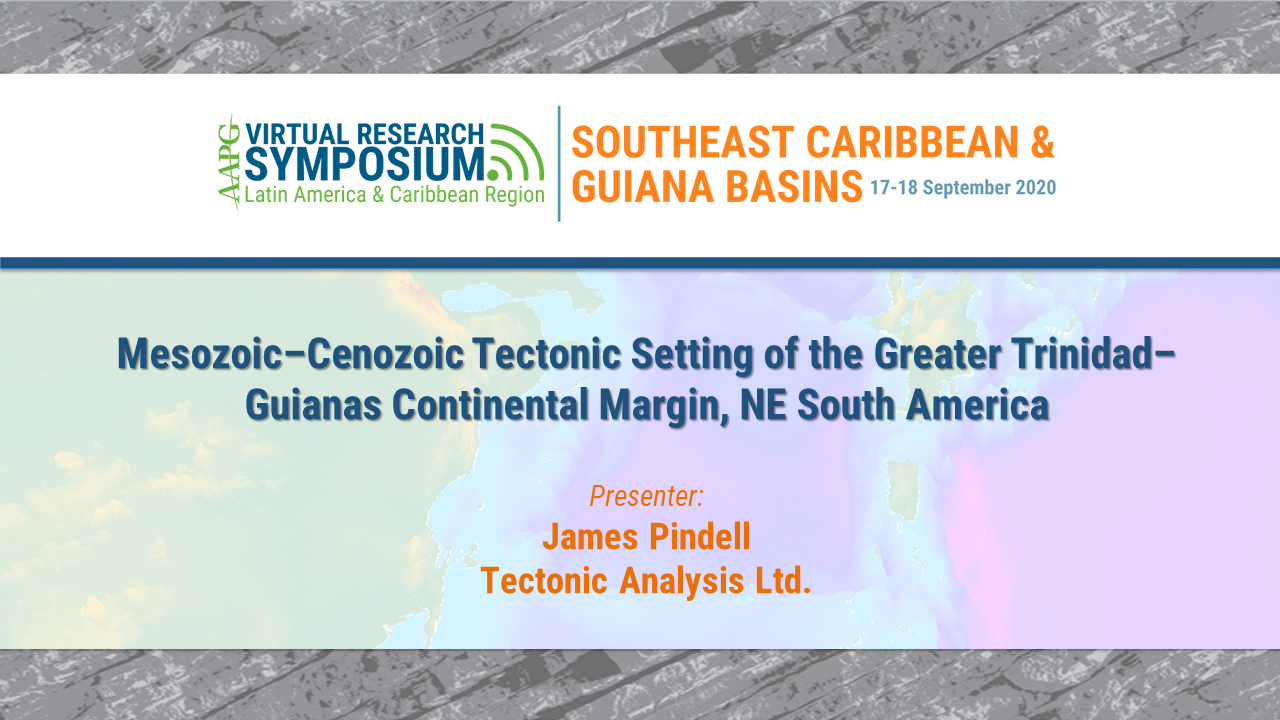
Summary
Author(s): James Pindell, Tectonic Analysis Ltd. (presenter), Kyle Reuber, ION
We review all the necessary tectonic reconstructions and evolutionary stages that have gone into the development of the Trinidad-Guianas margin since the Jurassic. This includes: the Equatorial Atlantic assembly between West Africa and north-eastern South America; the reconstruction of that conjoined margin with North America (Florida–Bahamas); the Proto-Caribbean closure of the Yucatán Block against Venezuela–northern Trinidad; the progressive breakup of the Gulf of Mexico and then the Proto-Caribbean Seaway; the separation history between Florida-Bahamas and the Guianas margin assuming two types of crust (continental vs igneous) beneath Great Bank, Bahamas; the opening of the Equatorial Atlantic; the possible inversion of northern South America in the Paleogene; and, finally, the arrival of the Caribbean Plate from the west. Specific issues addressed include: the igneous character of the basement of Demerara Rise–southern Guinea Plateau and the recent dredging of 173 Ma mafic rock (Basile et al. 2020) thereof; the likelihood that the continental crust of western Florida-Bahamas was stretched enough to maintain intra-continental contact with the conjugate Guianas margin through Middle Jurassic time; evidence for Paleogene inversion along northern South America and the possibility of two accretionary prisms in the Barbados Ridge; the Paleogene opening mechanism for the Grenada and Tobago basins within the Caribbean Plate; the middle Miocene oblique collision of the south-eastern Caribbean Plate with Eastern Venezuela and Trinidad; and the transition from dextral transpression to transtension in the SE Caribbean at 10 Ma. The regional framework provided by this assessment is general but identifies the pertinent issues and therefore provides a guide for refinement and more detailed work as data sets improve.
Bio
James Pindell, Tectonic Analysis
Jim earned a BSc from the Colgate University, a MSc from the State University of New York at Albany, and a PhD from the Durham University UK.
With 35 years of experience, he is currently the director at Tectonic Analysis Ltd. In Duncton, West Sussex, U.K., where he is on charge of leading research programs. He previously worked for 10 years interpreting basement structure for ION Geophysical (2010-2020). Jim’s professional memberships includes AAPG, GSA, AGU, GSL, and GCASGS.
Please log in to view or purchase the video presentation